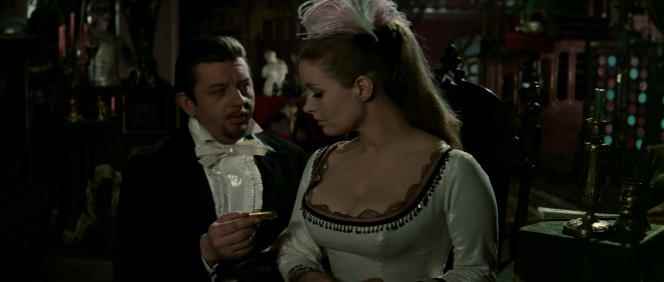THE OPINION OF THE “WORLD” – MASTERPIECE
The knowledge of Polish cinema in France, abundantly nourished (Wajda, Polanski, Skolimowski, Kieslowski, Zulawski…), remains however in debt of many treasures. On the other hand, the Malavida house has been working for a long time to disclose the great classics. Thus Wojciech Has (1925-2000), magnificent filmmaker, baroque and surrealist temperament, author of fifteen films, including The Doll (1968), unpublished in France, is one of the jewels. To the pleasure of having discovered two weeks ago the madly sexual I want to be a woman (1977), by the Spaniard Vicente Aranda, thus succeeds, today, that of letting oneself be carried away by the poisonous splendours of The Doll.
The action takes place between the years 1850 and 1870 in Poland. By way of a prologue, a young inn clerk who has ambitions of training at the University of kyiv is manhandled there by young rogues who cruelly mock him by locking him in the cellar and brutally slamming the trap door on him. on the hand. But this hand belongs to Stanislaw Wokulski (Mariusz Dmochowski, wonderful actor from Andrzej Munk) and they will eat in it.
An ellipse makes us find him at the height of his glory, a wealthy merchant returning from abroad, courted, at the same time as despised, by the penniless nobility of a country put under a bushel by the Russian Empire. Wokulski is an upstart enriched by the fact of the war, but inherited from his modest condition a humanism in the service of which he puts his fortune. Dreaming of reunifying his dismantled country under the banner of social and scientific progress, he nevertheless falls madly in love with the voluptuous and haughty aristocrat Izabela Lecka (Beata Tyszkiewicz, herself from the old Polish nobility), who, while benefiting from her largesse, cheats on him with a depraved cousin and tears his heart out of his cold hands.
Two extreme paintings
Has envelops this Balzacian frame with a baroque sensuality, tempered by the minimalist and crystalline composition of Wojciech Kilar (Polanski, Coppola, Gray will later call on his talents). The characters of the beautiful world evolve there in decorations overloaded with gilding, ancient statuary, stuffed animals and tropical vegetation, while the destitute slowly drown their lives in the cold, mire and prostitution. Although filmed in a flexible and continuous movement (sinuous sequence shots all in lateral tracking shots, depth of field, proliferation of objects and characters in the frame), both of these extreme tableaux tend to immobility. The characters of the salons are transformed into wax dolls, those of the street into anticipated corpses. The form thus takes charge of the very stakes of the story: the dream of a society in motion embodied by Wokulski comes up against the calcification of a “miniature country”.
You have 40.1% of this article left to read. The following is for subscribers only.
